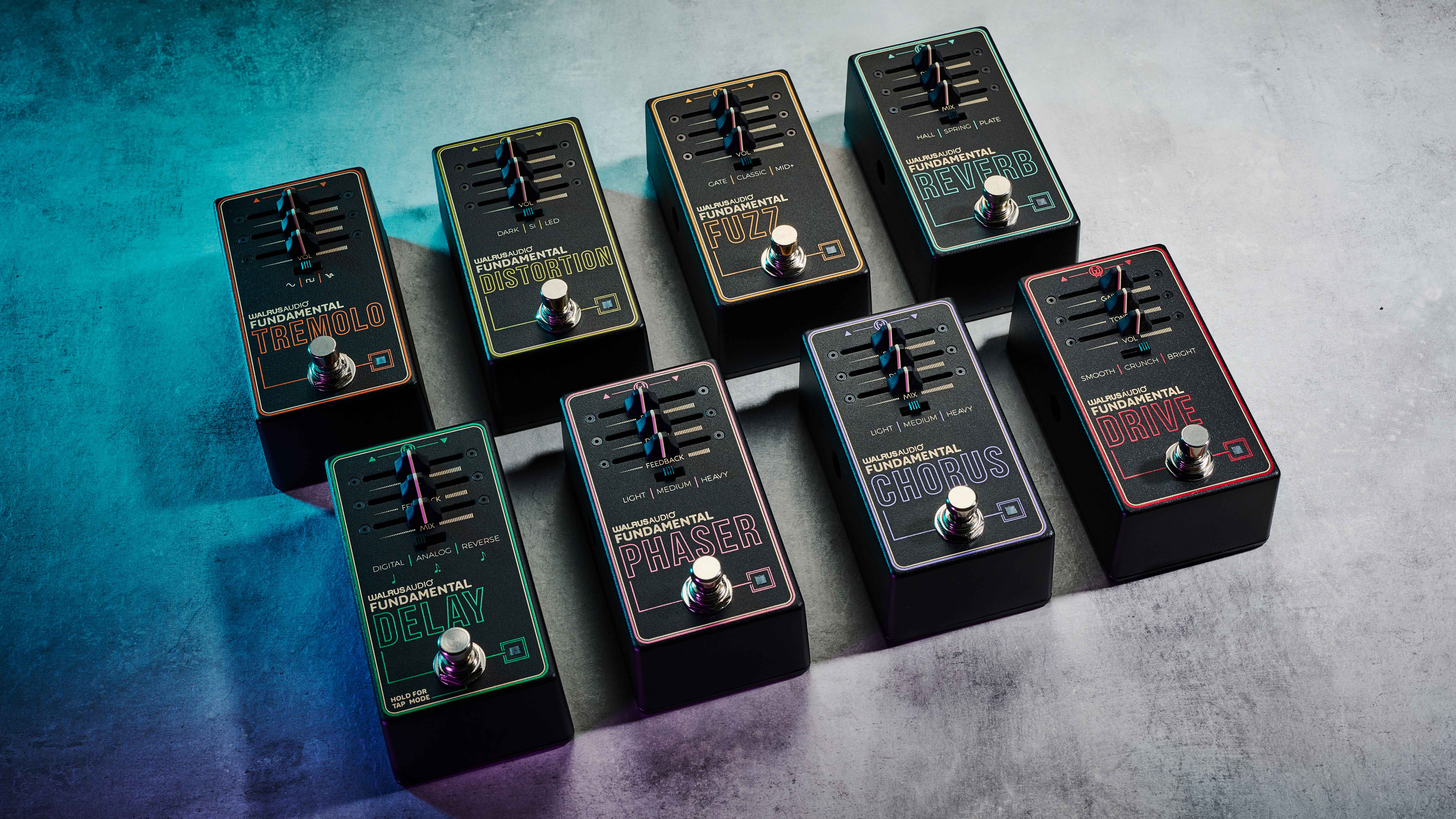
Walrus Fundamental Series pedals: What are they?
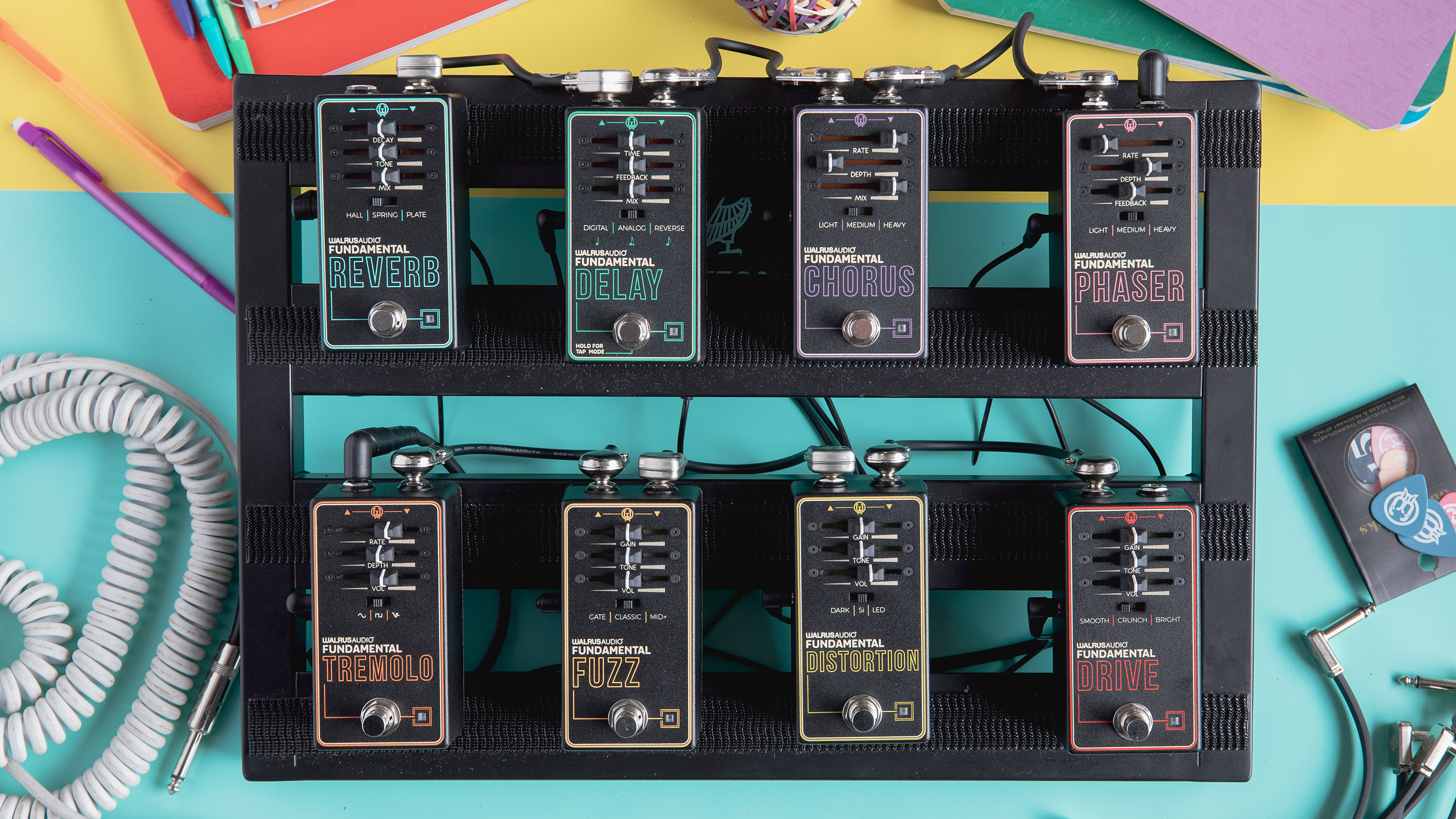
Guitarists can debate, sometimes argue, about a lot of things but surely we can all agree that great gear should be as accessible as possible. And it is, more and more; cheaper doesn't have to mean poor anymore as manufacturing and standards rise with expectations. And while the rise of boutique effects means a £250 overdrive pedal is no longer a cause for raised eyebrows, it's welcome news to see some of the higher-end US companies turn their attention to new more affordable – not budget – lines.
Walrus is going all-in with its new Fundamental series; eight effects that cover all the essential bases, and then some. Priced at $99 and $129 depending on the model, they're a statement from the US brand that has carved a consistently impressive reputation.
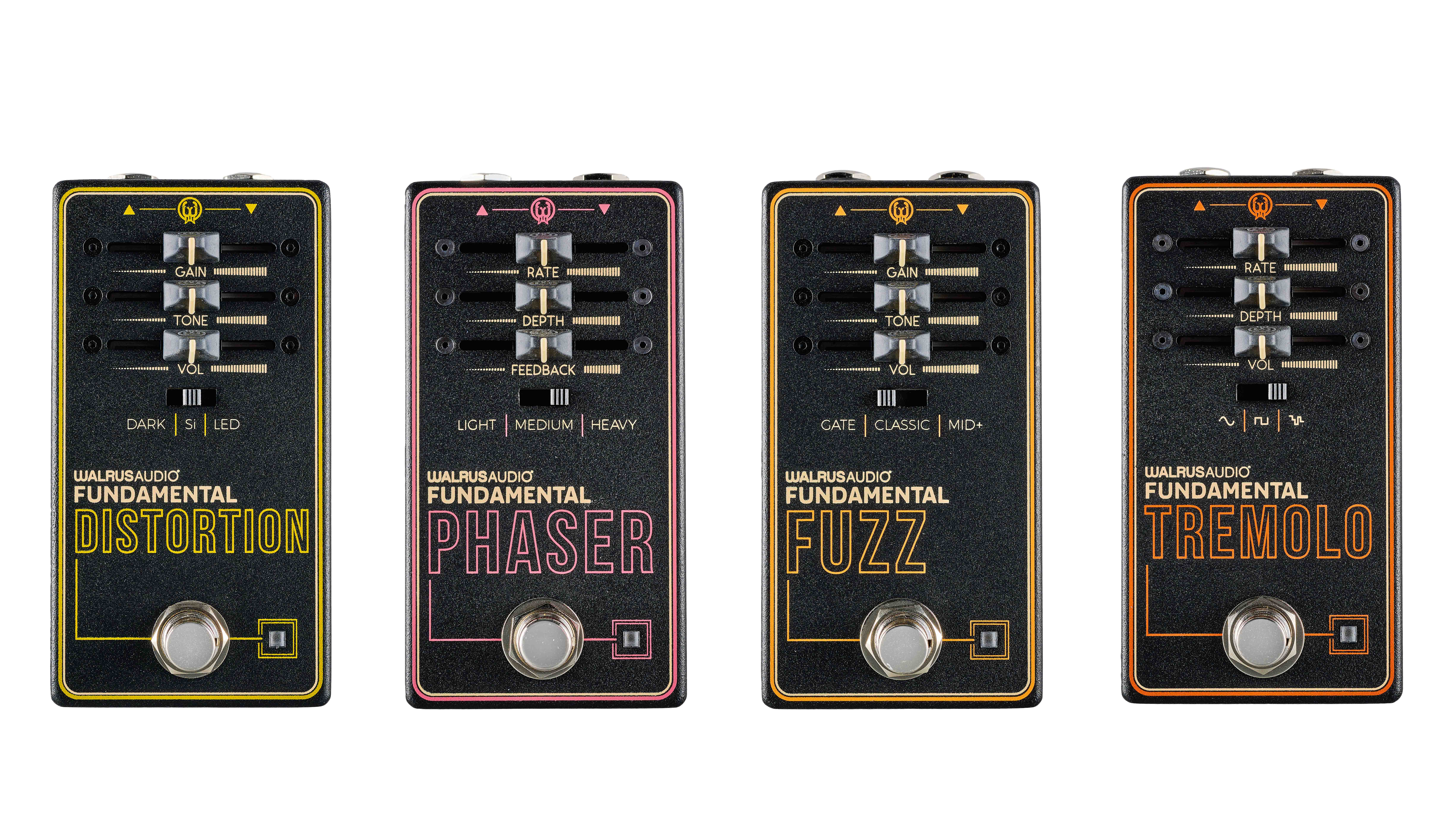
"I think what we’ve built is something a guitar player could get their hands on really early, but keep the spot on their board for a long time," noted Walrus president Colt Westbrook. And like all his work it's a passion project, something he drew on his own experiences for.
"Growing up playing guitar, there were several pedal lines that were part of my guitar journey," he noted. "The original Danelectro pedals like Fab Tone, Cool-Cat Chorus, Ibanez Soundtank series, Ibanez 10 Series, or even the ubiquitous Boss lineup we all had access to.
"I spent an inappropriate amount of time in front of an amp playing a DD3 after my paper route every day. I still have the ODR-1 I bought from Daddy-O’s in Stillwater, Oklahoma on my board today. I wanted Walrus to be part of the guitar journey earlier but incorporate the audio fidelity and build quality that we’ve spent the last 12 years developing for our core line and Mako series. I wanted us to build something that would make it super easy for newer pedal users to dial in great sounds, but for them to also be something a professional would be happy taking with them on tour."
This is reassuring to hear, but we'll need to take them for a spin to really find out how they stack up. Alex and I are testing all eight pedals from the range here, so we better get started!
Walrus Fundamental Series pedals: Performance and verdict
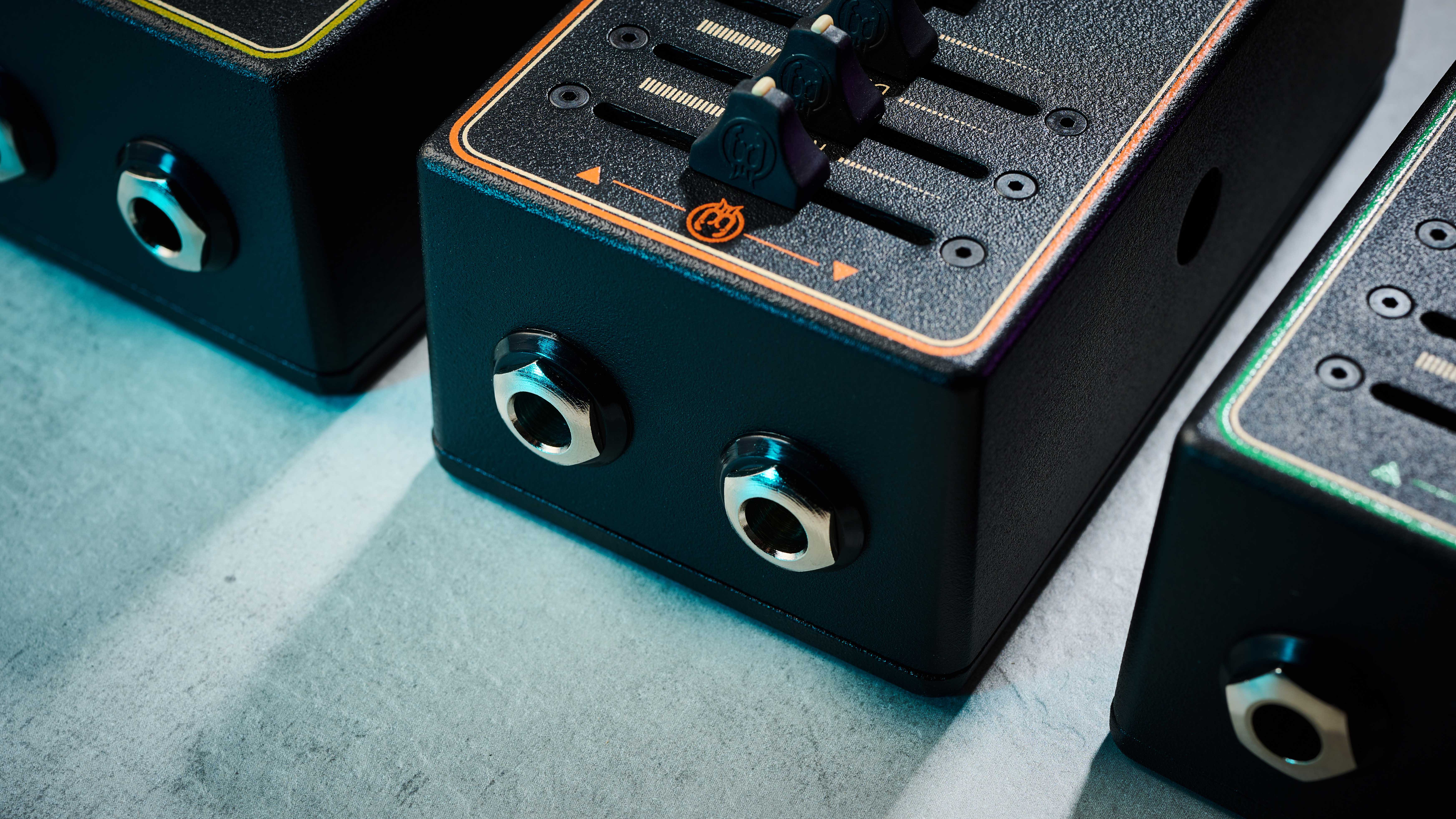
The major talking point of the build here will be the sliders, and we admit that when they were first revealed our pedal conservatism showed. Sliders are rare on pedals beyond graphic EQs and we fretted; what about the dust? What about the beer? Well, beer spillage on any pedal is bad news and when you're not using any pedal you're best to put your pedalboard back in its case or cover it – electrical devices attract dust. But theoretically compared to knobs, the gaps in those sliders could be more of an open goals to any smaller debris they do encounter.
Nevetheless, the three sliders with mode switch underneath do give these pedals a distinct identity in the Walrus catalogue and there is also an obvious advantage over knobs; you can immediately see where your settings are visually – adding to the accessible feel here. We wager these pedals wouldn't be quite as narrow with kobs either. Top jacks enhance this space-saving economy further – and pedalboard real estate matters! It may at first seem strange then that Walrus placed the 9V power input at the side, thus undoing some of that good work. There's a valid reason though; Walrus state that due to the smaller footprint of the pedals, they couldn't physically fit the power input at the top. Time for some right-angled power cables then!
We're definitely fans of the colour-coded graphic approach for the different effects in this USA-assembled range (the same manufacturing approach as the company's more expensive pedals), and the matt black metal casing too.
Drive ($99 / £95)
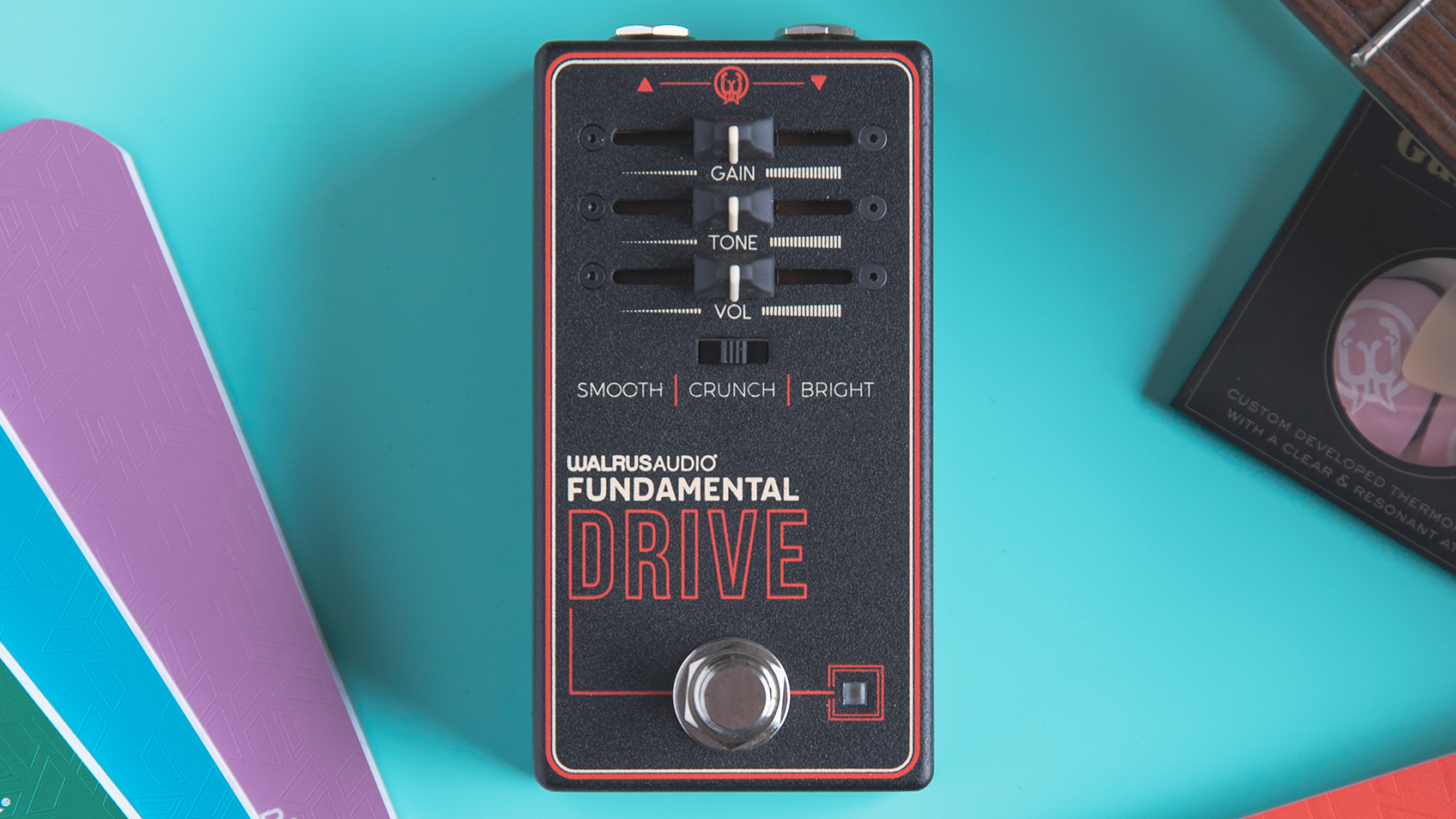
The Fundamental Drive has three modes: soft clipping, soft clipping with added hard clipping, and the same with a bass cut. On the sliders, you can control the expected parameters of gain, tone and volume. Walrus cut their teeth on a large range of drives, many of them clones, in unique enclosures. As a result, they’ve got a pretty encyclopedic range of distortions and drives that they could draw on for inspiration here.
It’s surprising then that this TL072-based drive is perhaps a little vanilla. It certainly gets the job done, but there’s not the open, transparent push of a Timmy, or the compression of a Tube Screamer or RAT. It’s got enough volume gain to push a tube amp into saturation, but its actual gain range, even in the hard clipping mode is not that wide.
The bright setting is a little brash, and you may need to dial back the treble on a particularly bright amp. The smooth mode is solid for low-gain licks, especially with the guitar tone knob pulled back. The crunch mode’s hard clipping is great for lead licks, but can be a little bit scratchy for chord playing, and we found it needed a bit of a push in the low mids.
The tone control is a low-pass filter, which makes sense as a slider. Then again, the result is a less useful parameter for adjustment, given treble only needs serious taming in one mode.
Reverb ($129 / £125)
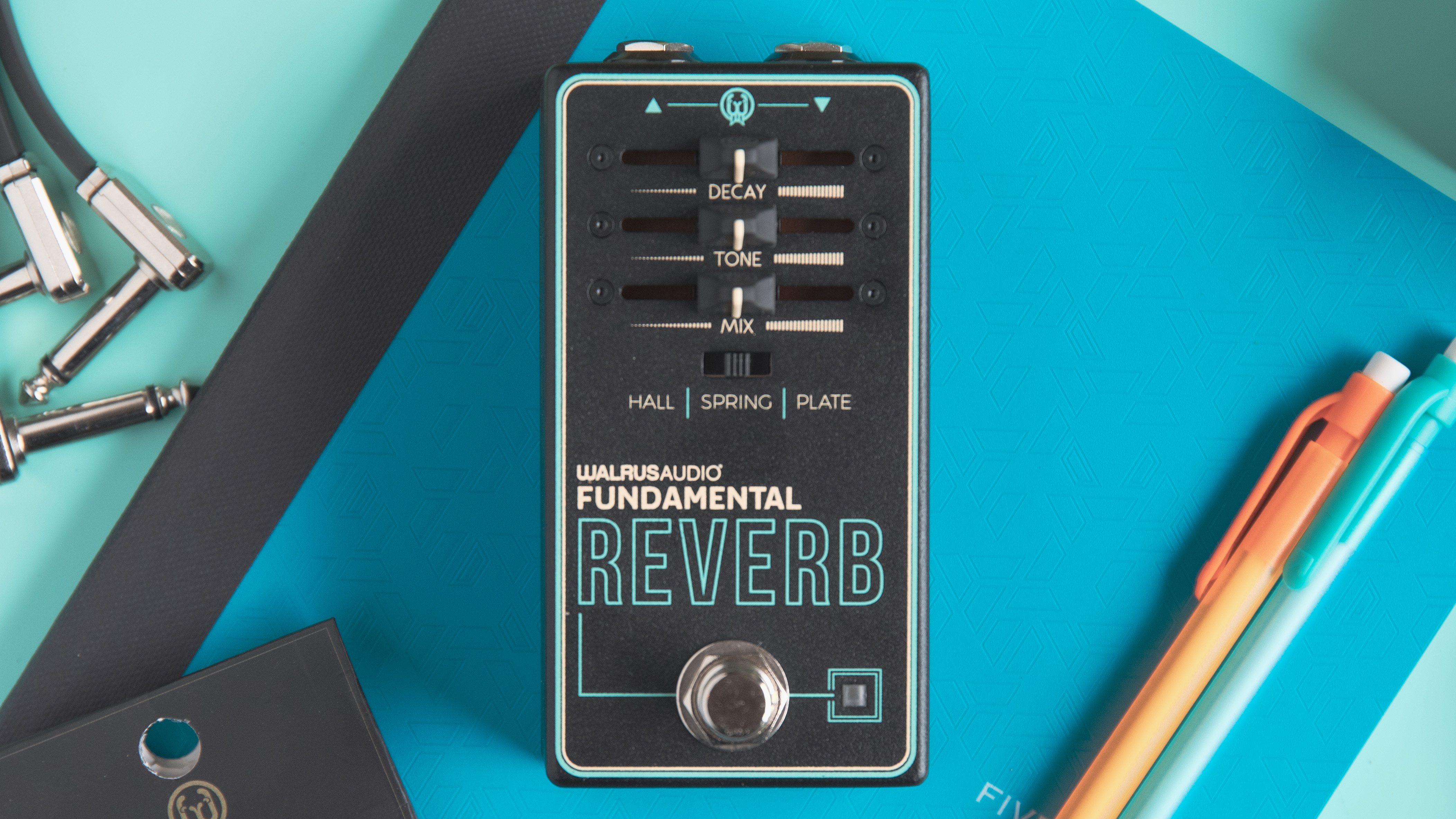
The Fundamental Reverb ships with three settings, hall, spring and plate, and decay, tone and mix controls. On paper this isn’t exciting, but the pedal is made more interesting by the fact that the decay slider has a decent range to it. This allows for a range of sounds from subtle to space cadet.
As a standalone reverb pedal it is a decent proposition, but more experimental players are likely to pair it with additional pedals like a delay. The tone control means that in the standalone and the stacking case, the pedal never gets too muddy. The Hall algorithm is spacious and airy, great for lead parts, while the spring mode has a satisfying wet twang. However, it’s the plate mode that’s the most interesting.
Not only is the model they’ve made decent, but the amount of decay available pushes it into the tonal ballpark of classic rack reverbs
Not only is the model they’ve made decent, but the amount of decay available pushes it into the tonal ballpark of classic rack reverbs. Now, it’s obviously not got the same studio grade fidelity as a Lexicon rack reverb, but it’s also a fraction of the cost, and housed in a compact enclosure. As is often the case with guitar effects, the audience listening to the part you write using this certainly won’t be able to tell the difference by ear.
As these pedals only have three controls, there’s not a sensible option other than the three they’ve chosen. However, in an ideal world, a predelay would have been useful, to help create space for the original note, as well as that sense of ‘blooming’ you get from reverbs with a pre-delay.
The problem is that having a tone control is more useful, more of the time, and a mix control is a nailed-on essential.
Phaser ($129 / £125)
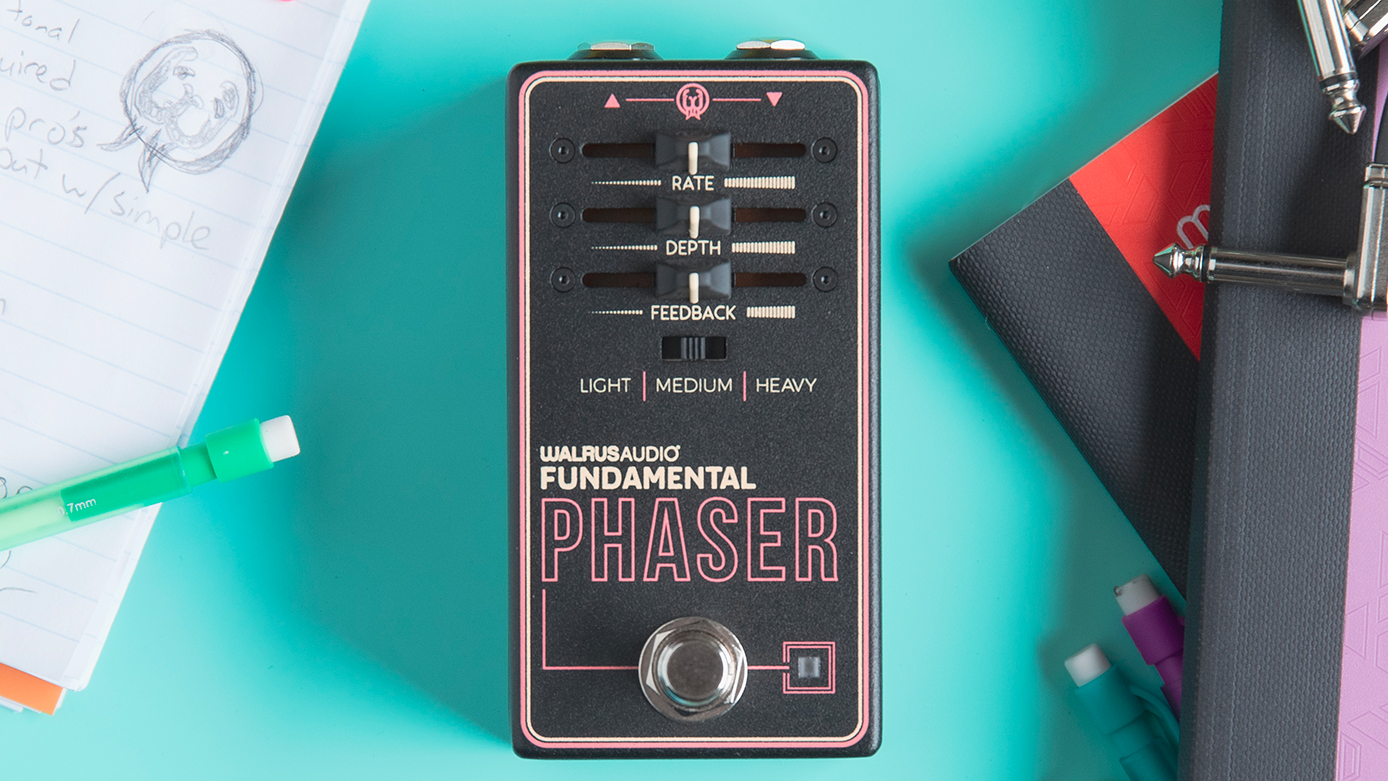
Is this phaser going to be viewed as the least essential Fundamental effect? In a line-up of classic choices, it's the closest to something niche in comparison and at the pricier end of the two-tiers, but it's come to the right place because we love a good phasing…
And it is a good one – three voicings of Light, Medium and Heavy modulation help to make this quite a workhorse with more editability than the established likes of the Phase 90 and Small stone. The Rate, Depth and Feedback controls give you a wide scope from control to offering subtle movement to bubbly, swirly and vocal in the upper reaches, depending on which slider you're pushing.
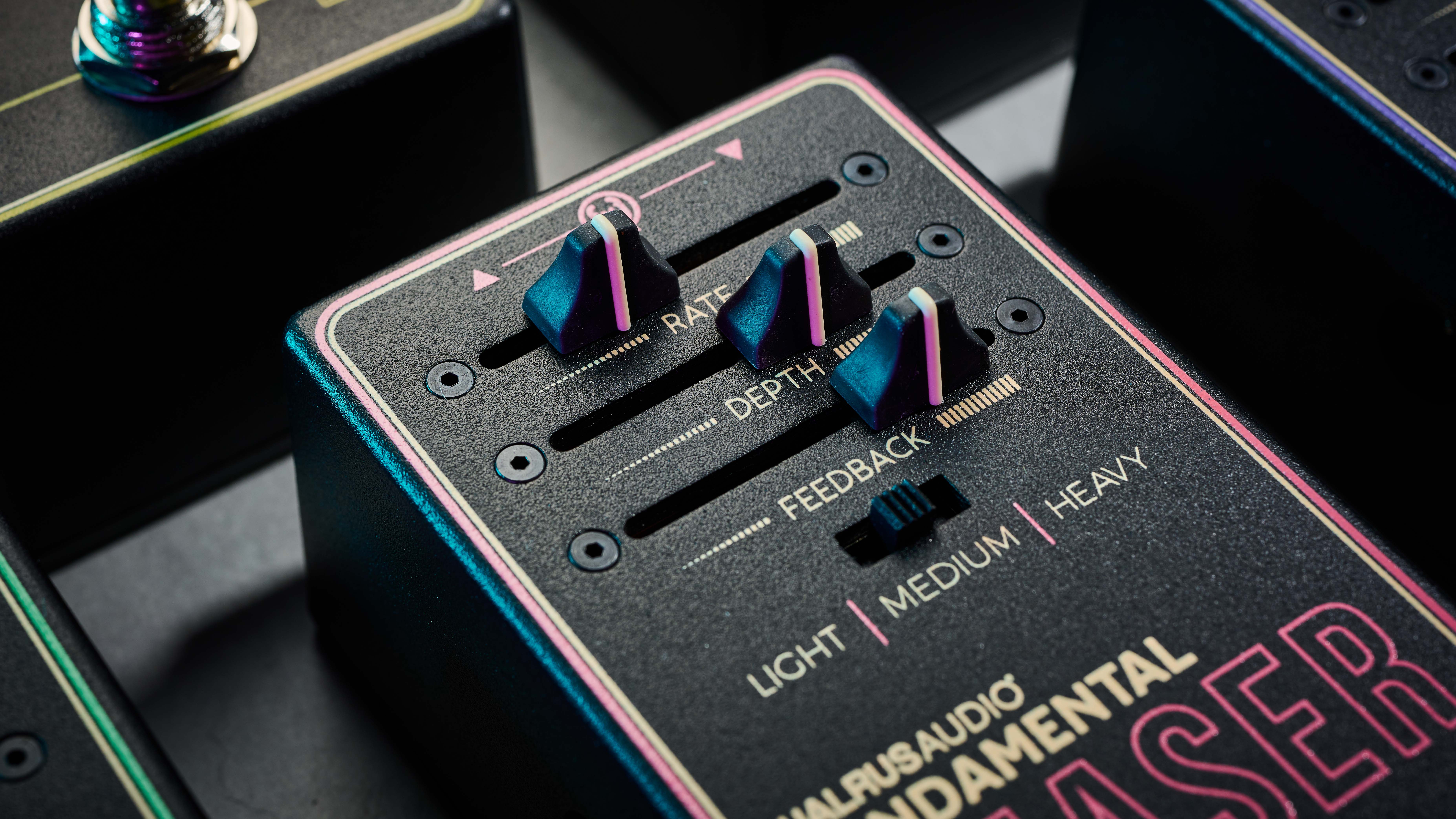
While Light is a one-stage phaser algorithm, Medium is four and the more experimental (read: very unsubtle) sounds of Heavy's 16-stage. There's plenty of scope here and the Heavy mode with all settings on minimal made for a great clear dynamic lead tone without going overboard.
Tremolo ($129 / £125)
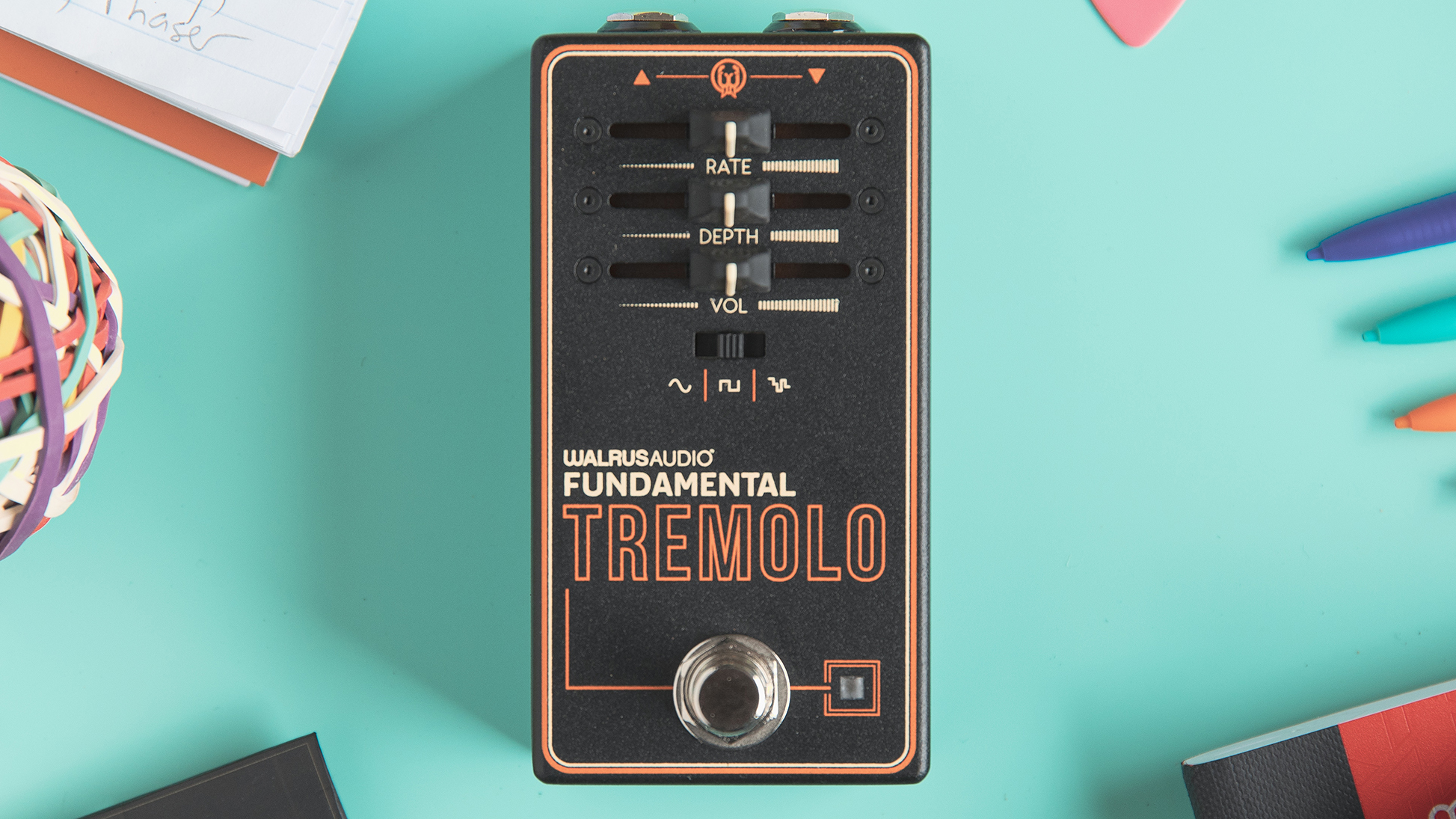
Another pedal that can be used subtly but effectively, the volume control here can give you a really nice boost with a softer attack. But alongside its Sine and Square wave modes, this optical tremolo is one of the few in Fundamental range to reflect Walrus's wilder features further up their pedal line with the randomised mode seemingly inspired by its Monument tremolo.
This feels like a relative to that pedal, which is very good news. Though the Monument's tap tempo here would have been really nice to have, the Fundamental pedal's warmth is inspiring and it's easy to dial in smooth noirish atmospheres with sine and choppier rock with Square.
That Square-Wave mode feels less hard than some we've encountered – less abrupt and more musical, while the Random mode can be used in a more discordant way with a soft and choppy mix, but the rate interval itself remains constant.
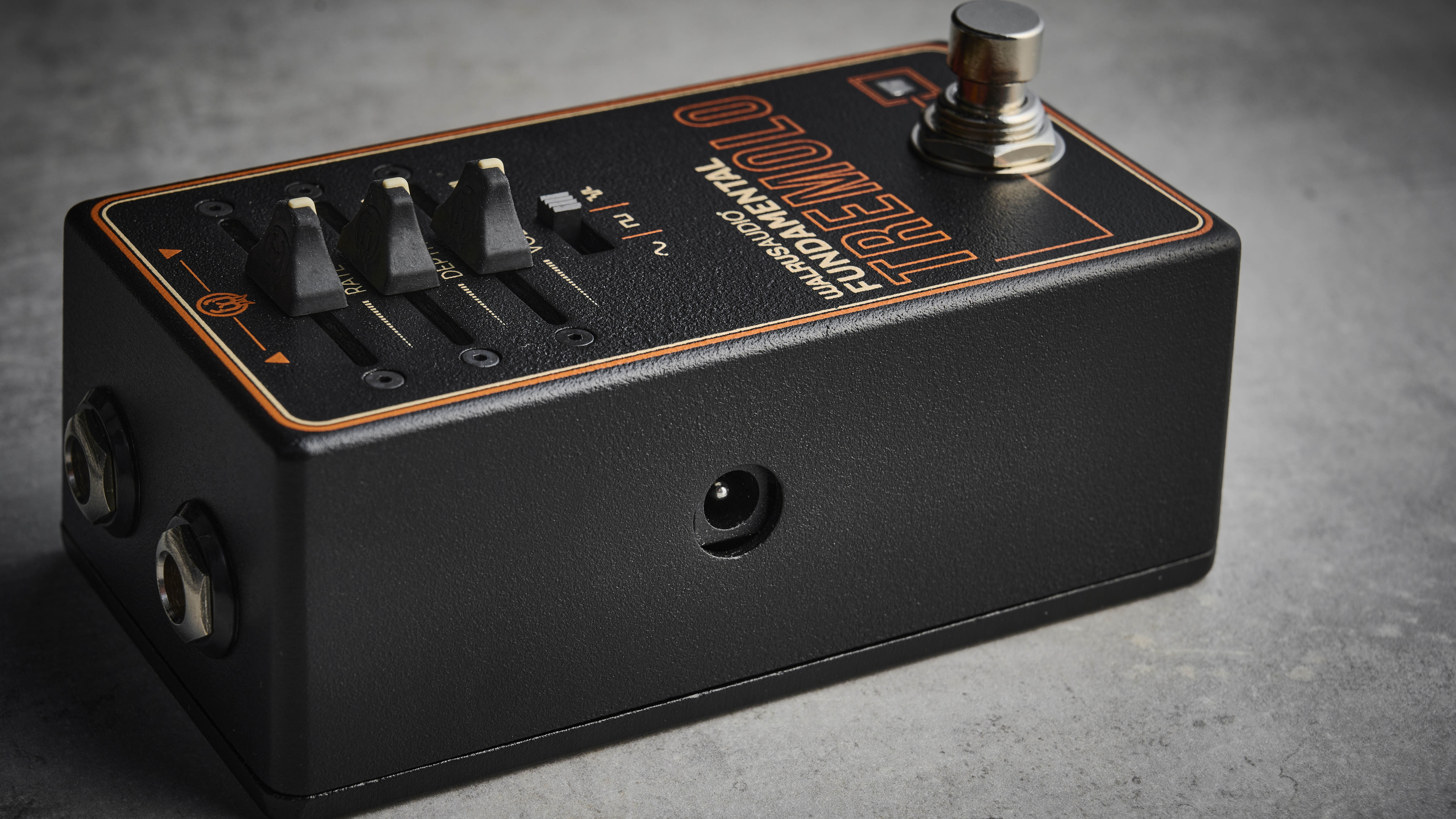
The combination and character here feel like a real showcase for the Fundamental range; an excellent tremolo for anyone. The more you experiment with this pedal's wide range, the more you realise how overlooked tremolo can be; much more than the Boulevard Of Broken Dreams or Gimme Shelter go-tos. It's a timeless texture that can be much harder to tie to a musical era when it's used tastefully too.
Delay ($129 / £125)
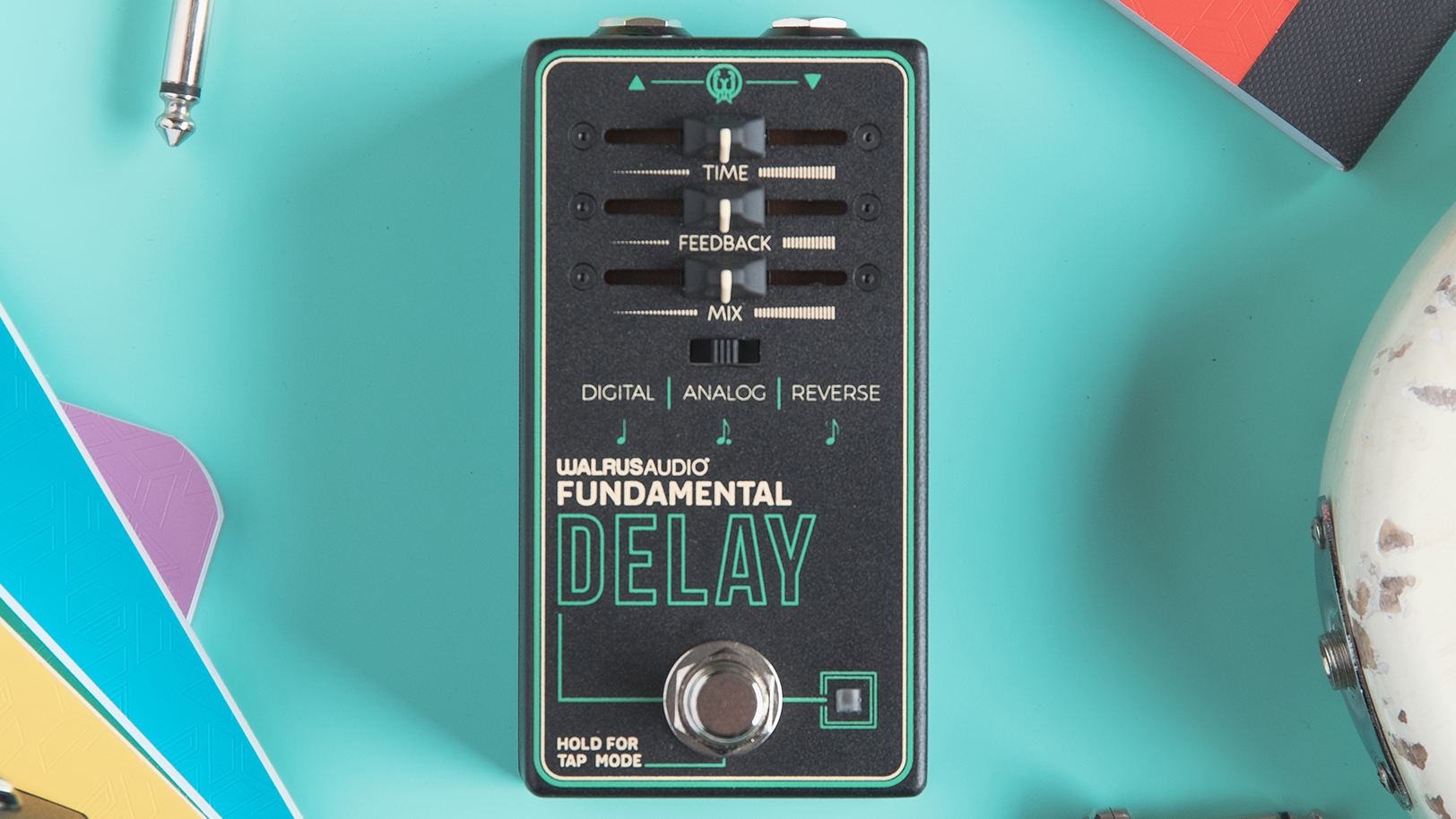
There are few surprises on this delay pedal in terms of the feature set. There are three modes, with digital, analog, reverse, and the standard time, feedback and mix parameters controlled by the sliders. The digital mode is the default digital delay sound, pristine and with no high-frequency roll-off on the repeats.
At higher feedback and mix settings, there are, granted, some interesting experimental sounds that can be coaxed out of the pedal. On the whole, it offers a glassy and pristine sound.
The third mode, reverse, is a truly exciting feature of this pedal
The analogue mode is a better starting point, as it’s more like a dark-voiced digital mode than a true analogue replication. There are darker repeats, but the way they respond is a little unlike an analogue device, meaning that it’s still identifiably a digital delay. However, the change in voicing makes it a lot more useful. Even as defenders of very bright or digital-sounding effects, the crispness of the first mode is somewhat biting.
The third mode, reverse, is a truly exciting feature of this pedal. Reverse delays are a good way of moving the repeats out of the way of the initial note, since the reversed envelope necessarily means an enforced pre-delay. That, plus the smoother timbre of the fade-in is why you often see post-rock guitarists using reverse modes when tremolo-picking.
Though there are other pedals available at budget price points that offer reverse delay, this is a smart feature for Walrus to have added. No doubt it will result in a lot of recommends on pedal forums, when people inevitably ask the question, “what budget options are available for reverse delay?”
Distortion ($99 / £95)
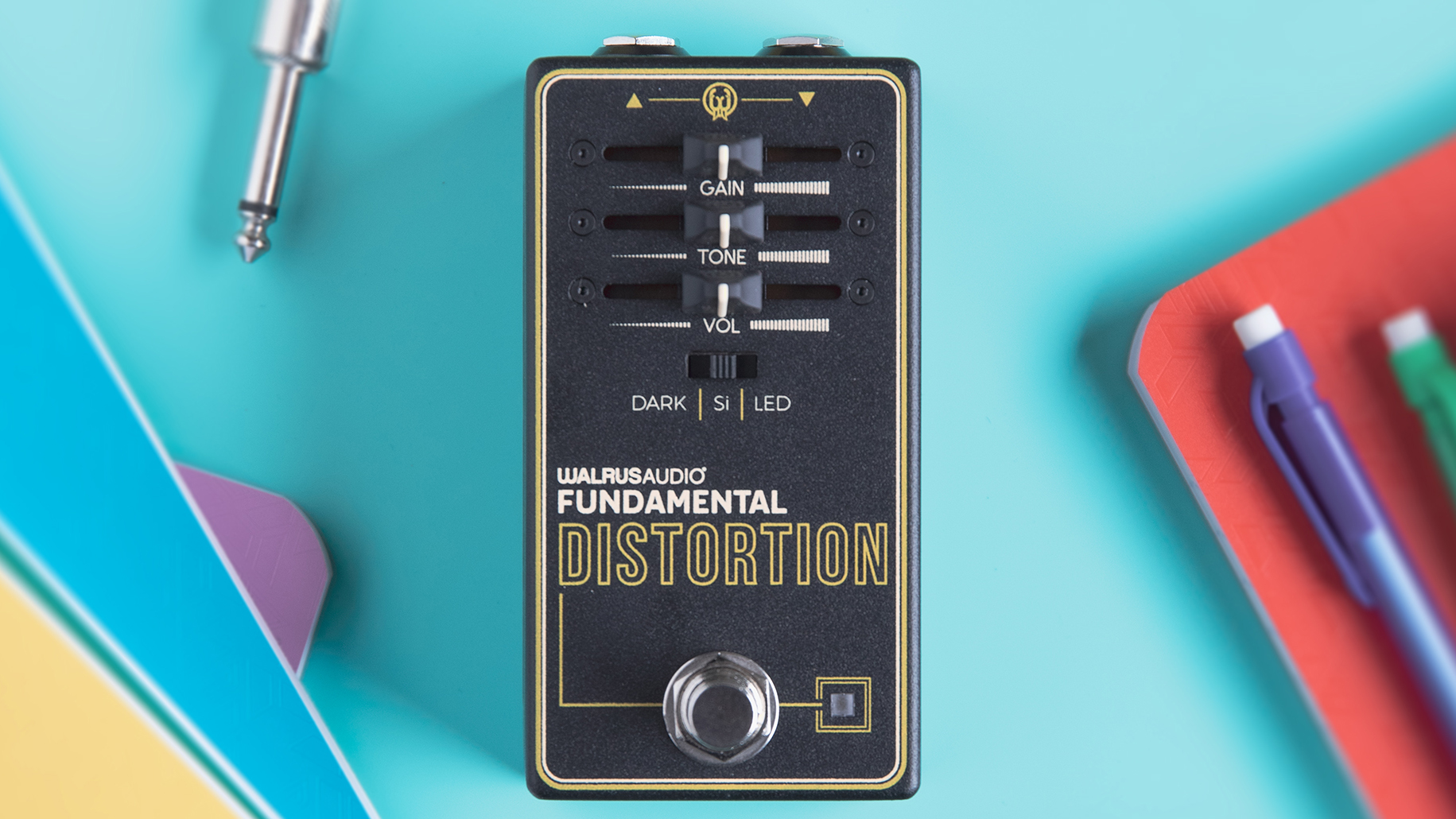
This is, ahem, fundamentally voiced at the darker and fizzier end of distortion, somewhere between a Pro Co Rat and a fuzz pedal for us. Walrus's own Iron Horse takes influence from the Rat so they have form here and the combo at the core here could reel people in.
Even with three modes, this is going to be more of an opinion-divider than it could, or perhaps should have been for the Fundamental range. We can't imagine the Dark mode here being anyone's go-to compared to the other two voices when it would struggle in a mix.
The silicon hard clipping of Classic sits in the mix the best to our ears
While the silicon hard clipping of Classic sits in the mix the best to our ears, the gainier diode clipping of the LED mode is louder by nature, and more compressed too. Players may need to dial back the level to taste.
We found ourselves keeping gain about midway in the LED mode, while being careful to dial back the Tone to prevent too much high-end fizz, while also balancing the transition with our overdrive pedal tone. Right of the centre notch on the Tone pot control boosts highs, while left of it cuts them.
Overall, this is a solid distortion with appeal that will be dependent how you like the fuzz/distortion character.
Chorus ($129 / £125)
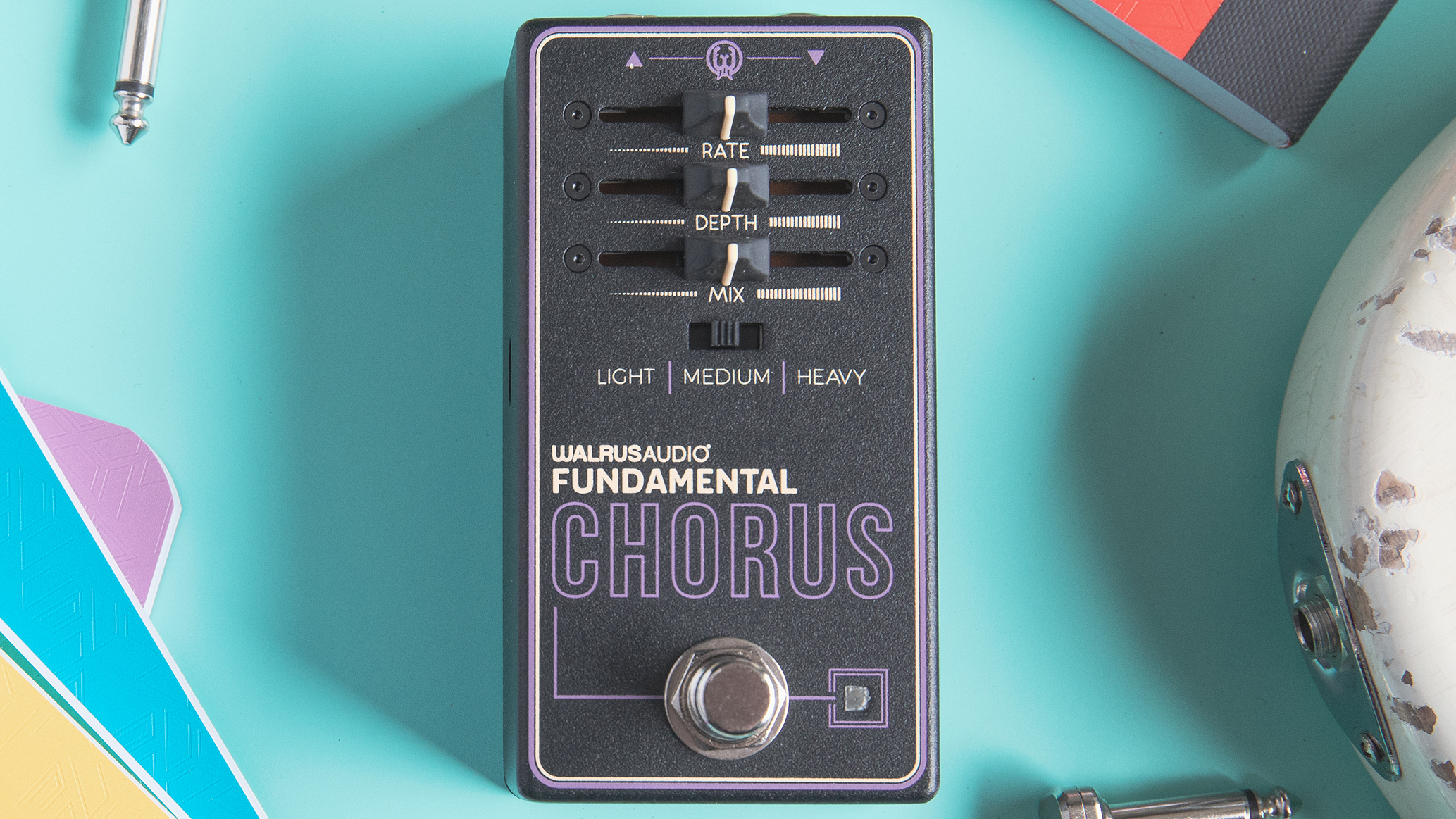
The Fundamental Chorus is standard stuff at first glance, with rate, depth and mix on the front panel. The modes are where the fun is, with an analogue chorus, an analogue chorus with additional taps for more modulation, and an emulation of the LCR tri-chorus.
All of the modes are very usable, with the first and third perhaps of most interest. As you move between them, a general rule is that the effect becomes more dramatic, so pulling the mix back is necessary. Although it’s a different beast, the analogue emulation means that for the first two modes we’re comparing to units like the TC June 60 and BOSS DC-2.
Like those units, we suspect that this would be pretty decent on keyboards or analogue synths. The chorus is rich and easy to tame via the mix control, but it’s also worth saying that it’s not very analogue sounding. There’s little of the roll-off and warble that you might expect, but that doesn’t mean the tone or voicing is bad. Instead it’s more a case of looking to its strengths. As a more pristine sound, it stacks better than some pure analogue units.
Fuzz ($99 / £95)
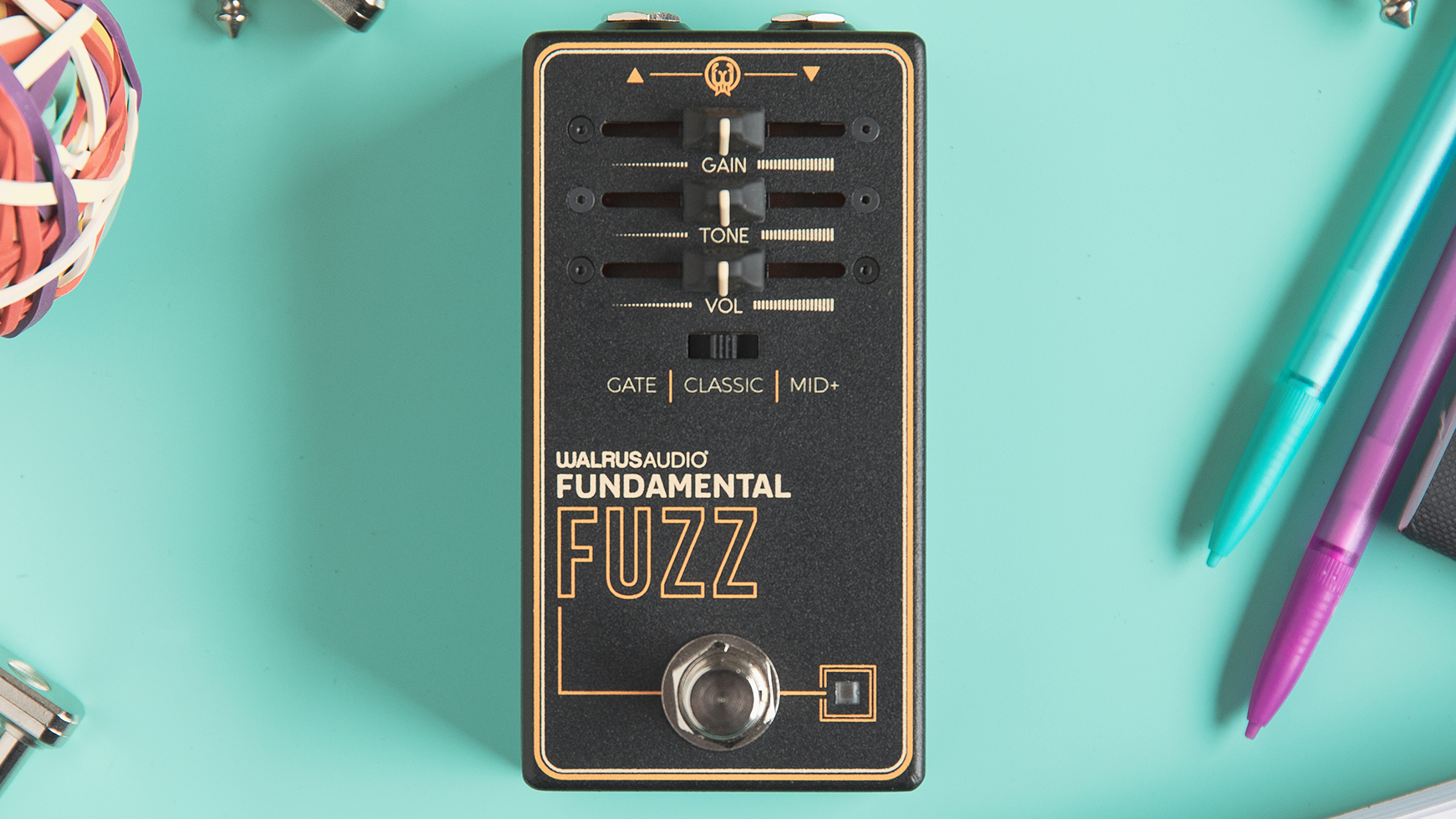
Nobody would call fuzz pedals subtle, but this one is especially unapologetic. Walrus are upfront that this is an "aggressive" fuzz. Perhaps unsurprisingly given the fuzz leanings of the Fundamental Distortion. So the Gate Mode is velcro city, the Classic is supposed to be more of a scooped affair, while the Mid+ offers the presence to sit the best in a band mix without sinking.
We didn't hear it that way at first. And we gravitated the Classic mode because the Mid+ didn't seem to quite live up to its name for us. But when testing in a band mix recording context that third mode soon showed its merits.
Even so, when it came to gain stacking, the op-amp Big Muff vibe of the Classic mode worked best to our ears with our Tumnus overdrive. The distinct three modes definitely all have their place then; and that Gated mode could be just the kind of crazy your next lead break or intro needs.
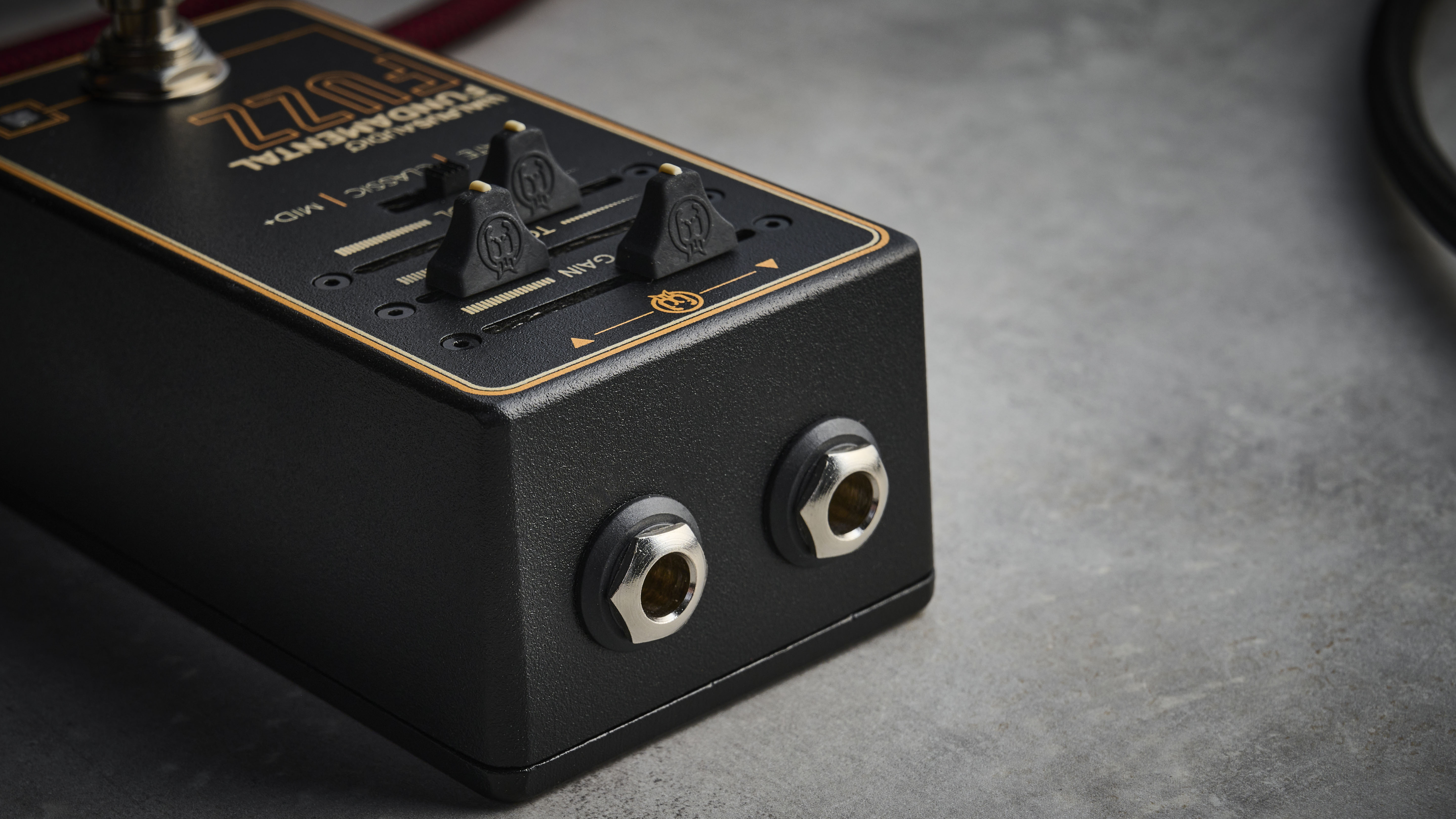
The challenge Walrus faces here for us is one of price point – they are affordable in relation to Walrus's other pedals and many US brands, but there has never been more choice in the effects pedals world around the $100 mark. Which is a great thing for players.
But the Walrus quality shows through. We only hesitate with the the Fuzz, Drive and Distortion here as recommended buying propositions, and up against some serious competition in a crowded marketplace they don't distinguish themselves quite enough to excite us as an essential first pedal or workhorse prospect in their classes. And Walrus's impressive – and admittedly more expensive – Eras, Ages and Eons pedals also cast a long shadow too. But elsewhere there's so much range and usability with the three-mode approach in the Fundamentals series, it's hard to find fault. The modulations especially – and we'll give special mention to the Tremolo – would fit in with most pedalboard setups and soon prove their worth.
Verdict: A mostly impressive series, especially on the modulation side but less so with the drives, and a three-mode pedal proposition that works well for newcomers and more established players.
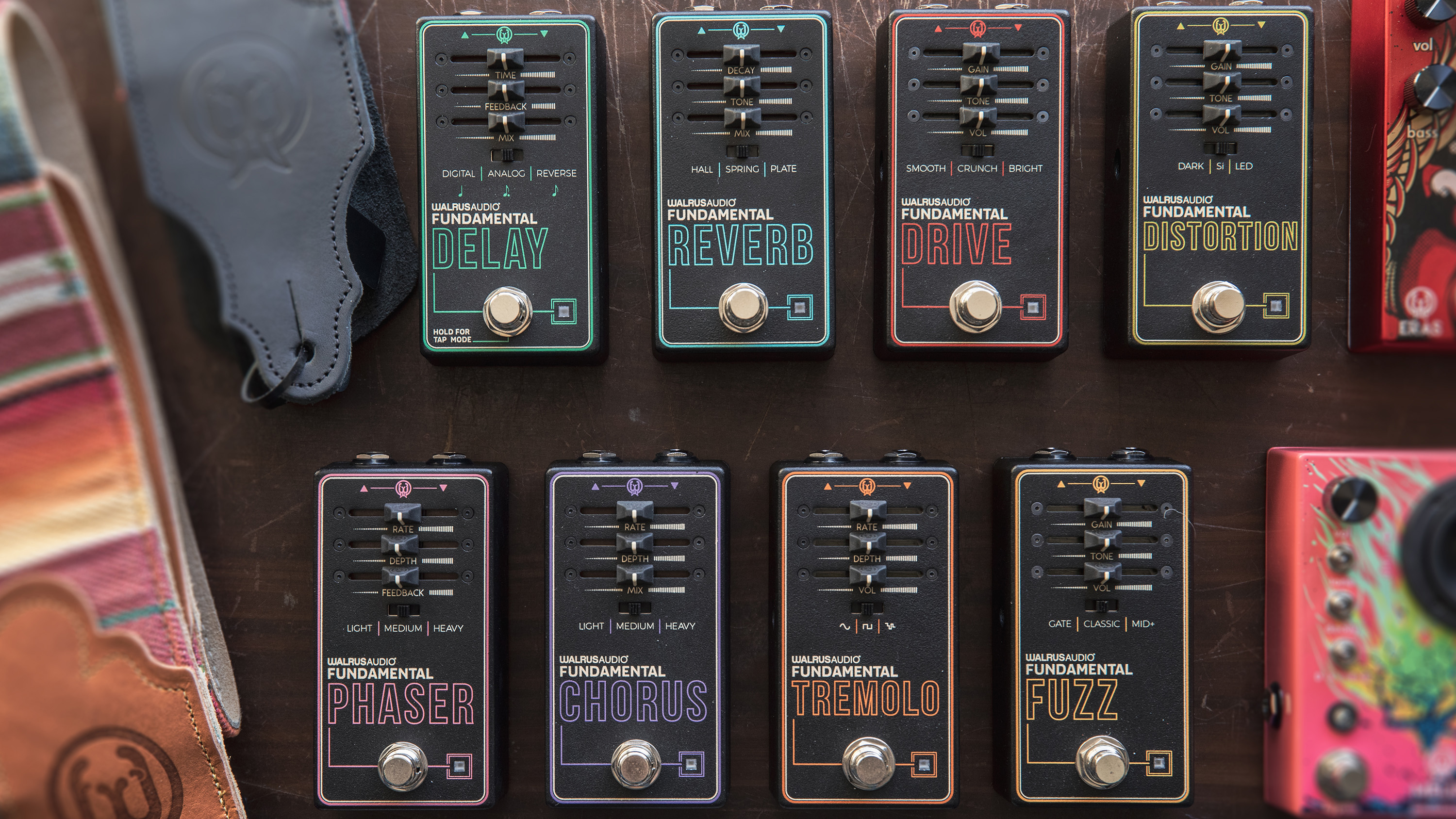
Walrus Fundamental pedals: Hands-on videos
Andertons
Sweetwater
Let's Play All
Reverb
Walrus Fundamental Series pedals: specifications
- Drive controls: Gain, Tone, Volume, Smooth/Crunch/Bright switch, bypass footswitch
- Reverb controls: Decay, Tone, Mix, Hall/Spring/Plate switch, bypass footswitch
- Phaser controls: Rate, Depth, Feedback, Light/Medium/Heavy switch, bypass footswitch
- Tremolo controls: Rate, Depth, Volume, Sine/Square/Random switch, bypass footswitch
- Delay controls: Time, Feedback, Mix, Digital/Analog/ Reverse switch, bypass footswitch
- Distortion controls: Gain, Tone, Volume, Dark/Si/LED switch, bypass footswitch
- Chorus controls: Rate, Depth, Mix, Light / Medium / Heavy switch, bypass footswitch
- Fuzz controls: Gain, Tone, Volume, Gate/Classic/Mid+ switch, bypass footswitch
- FEATURES: 9V DC power, True bypass (Drive, Fuzz, Distortion), Buffered bypass (Phaser, Delay, Reverb, Chorus, Tremolo), tap tempo (Delay)
- DIMENSIONS: 60 (w) x 116 (d) x 56mm (h)







